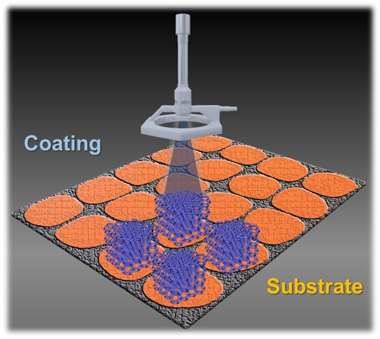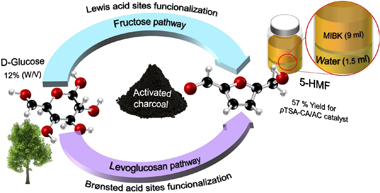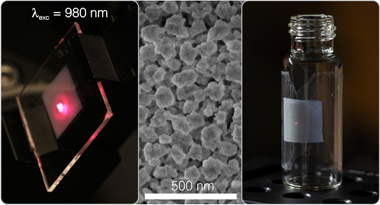Artículos SCI
2021
2021
Química de Superficies y Catálisis
Bimetallic Ni-Ru and Ni-Re Catalysts for Dry Reforming of Methane: Understanding the Synergies of the Selected Promoters
Moreno, AA; Ramirez-Reina, T; Ivanova, S; Roger, AC; Centeno, MA; Odriozola, JAFrontiers in Chemistry, 9 (2021) 694976
Show abstract ▽
Designing an economically viable catalyst that maintains high catalytic activity and stability is the key to unlock dry reforming of methane (DRM) as a primary strategy for biogas valorization. Ni/Al2O3 catalysts have been widely used for this purpose; however, several modifications have been reported in the last years in order to prevent coke deposition and deactivation of the samples. Modification of the acidity of the support and the addition of noble metal promoters are between the most reported strategies. Nevertheless, in the task of designing an active and stable catalyst for DRM, the selection of an appropriate noble metal promoter is turning more challenging owing to the lack of homogeneity of the different studies. Therefore, this research aims to compare Ru (0.50 and 2.0%) and Re (0.50 and 2.0%) as noble metal promoters for a Ni/MgAl2O4 catalyst under the same synthesis and reaction conditions. Catalysts were characterized by XRF, BET, XRD, TPR, hydrogen chemisorption (H2-TPD), and dry reforming reaction tests. Results show that both promoters increase Ni reducibility and dispersion. However, Ru seems a better promoter for DRM since 0.50% of Ru increases the catalytic activity in 10% and leads to less coke deposition.
Julio, 2021 | DOI: 10.3389/fchem.2021.694976
Química de Superficies y Catálisis
Current scenario and prospects in manufacture strategies for glass, quartz, polymers and metallic microreactors: A comprehensive review
Dominguez, MI; Centeno, MA; Martinez, TM; Bobadilla, LF; Laguna, OH; Odriozola, JAChemical Engineering Research & Design, 171 (2021) 13-35
Show abstract ▽

One of the most remarkable benefits of the microreactors is the achievement of more efficient processes by enhancing the heat and mass transfer phenomena, which is the key factor for processes intensification in chemical reactions, resulting in higher conversion, selectivity and yield towards desired products. Currently, the entire scenario of microreaction approach is an emergent technology and further advances are ongoing. Several strategies have been successfully applied for structuring processes that imply the fixation of the catalysts on the microreactors. However, there are features such as the physicochemical stability of the coatings under reaction conditions that must be improved, motivating the search for new protocols. This review provides a general overview of the most important methodologies applied for glass, quartz, polymers and metals microreactors manufacture and for their coating, analyzing the advantages and drawbacks of every procedure. Furthermore, an outline of the novel insights based on additive manufacturing techniques are described.
Julio, 2021 | DOI: 10.1016/j.cherd.2021.05.001
Química de Superficies y Catálisis
Dehydration of glucose to 5-Hydroxymethlyfurfural on bifunctional carbon catalysts
Bounoukta, CE; Megias-Sayago, C; Ammari, F; Ivanova, S; Monzon, A; Centeno, MA; Odriozola, JAApplied Catalysis B-Environmental, 286 (2021) 119938
Show abstract ▽

The proposed study tries to reply on one important question concerning glucose dehydration: What is the role of bare or tandem Lewis/Bronsted acid sites in the reaction and which are better? A series of mono and bifunctional catalyst are designed and screened for the glucose dehydration reaction. The results clearly reveal that catalyst activity is a function of catalyst composition. The presence of Lewis sites the reaction toward first step isomerization, while the Brunsted acid dehydrate directly glucose to HMF via levoglucosane intermediate. This study proposed also a kinetic modelling of the included reactions and their contrast with the empirical observations.
Junio, 2021 | DOI: 10.1016/j.apcatb.2021.119938
Materiales Ópticos Multifuncionales - Materiales Coloidales
Highly Versatile Upconverting Oxyfluoride-Based Nanophosphor Films
Ngo, TT; Cabello-Olmo, E; Arroyo, E; Becerro, AI; Ocana, M; Lozano, G; Miguez, HACS Applied Materials & Interfaces, 13 (2021) 30051-30060
Show abstract ▽

Fluoride-based compounds doped with rare-earth cations are the preferred choice of materials to achieve efficient upconversion, of interest for a plethora of applications ranging from bioimaging to energy harvesting. Herein, we demonstrate a simple route to fabricate bright upconverting films that are transparent, self-standing, flexible, and emit different colors. Starting from the solvothermal synthesis of uniform and colloidally stable yttrium fluoride nanoparticles doped with Yb3+ and Er3+, Ho3+, or Tm3+, we find the experimental conditions to process the nanophosphors as optical quality films of controlled thickness between few hundreds of nanometers and several micrometers. A thorough analysis of both structural and photophysical properties of films annealed at different temperatures reveals a tradeoff between the oxidation of the matrix, which transitions through an oxyfluoride crystal phase, and the efficiency of the upconversion photoluminescence process. It represents a significant step forward in the understanding of the fundamental properties of upconverting materials and can be leveraged for the optimization of upconversion systems in general. We prove bright multicolor upconversion photoluminescence in oxyfluoride-based phosphor transparent films upon excitation with a 980 nm laser for both rigid and flexible versions of the layers, being possible to use the latter to coat surfaces of arbitrary shape. Our results pave the way toward the development of upconverting coatings that can be conveniently integrated in applications that demand a large degree of versatility.
Junio, 2021 | DOI: 10.1021/acsami.1c07012
Reactividad de Sólidos
Paving the Way to Establish Protocols: Modeling and Predicting Mechanochemical Reactions
Gil-Gonzalez, E; Perez-Maqueda, LA; Sanchez-Jimenez, PE; Perejon, AJournal of Physical Chemistry Letters, 12 (2021) 5540-5546
Show abstract ▽
Parametrization of mechanochemical reactions, or relating the evolution of the reaction progress to the supplied input power, is required both to establish protocols and to gain insight into mechanochemical reactions. Thus, results could be compared, replicated, or scaled up even under different milling conditions, enlarging the domains of application of mechanochemistry. Here, we propose a procedure that allows the parametrization of mechanochemical reactions as a function of the supplied input power from the direct analysis of the milling experiments in a model-free approach, where neither the kinetic model function nor the rate constant equation are previously assumed. This procedure has been successfully tested with the mechanochemical reaction of CH3NH3PbCl3, enabling the possibility to make predictions regardless of the milling device as well as gaining insight into the reaction dynamic. This methodology can work for any other mechanical reaction and definitely paves the way to establish mechanochemistry as a standard synthetic procedure.
Junio, 2021 | DOI: 10.1021/acs.jpclett.1c01472
- ‹ anterior
- 73 of 410
- siguiente ›














